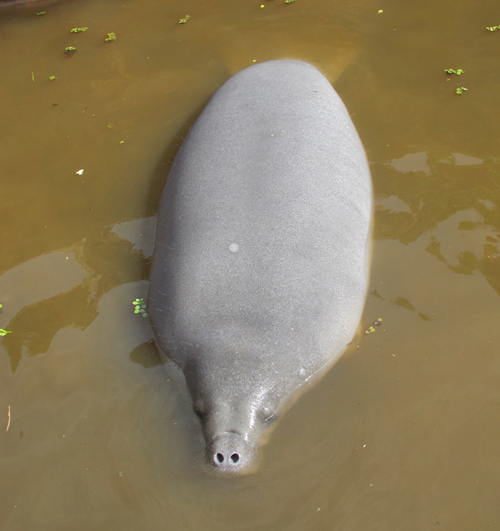Leech feeding on a manatee was found in Chiapas, Mexico
Report comprises first record of blood-feeding leech, Haementeria acuecueyetzin in Chiapas
iDNA test results of mezcal-preserved specimen published in the Journal of Parasitology
 TORONTO, August 30, 2016 - A team of international researchers, including Dr. Sebastian Kvist, Associate Curator of Invertebrates at the Royal Ontario Museum (ROM), has discovered some key habits and features of a leech species, as studied on a specimen drawn from the head of a manatee. A study, available online from the Journal of Parasitology, includes research contributed by Kvist, in addition to that of colleagues from the American Museum of Natural History and Mexican institutions El Colegio de La Frontera Sur, Universidad de Puebla, and Universidad Nacional Autonoma de Mexico Instituto de Biologia. The leech, taken from the head of a manatee in its natural habitat in Chiapas, Mexico, was preserved in the only available liquid at the time of its collection—a bottle of mezcal, previously best known for the “worm” sitting in the bottom of each bottle.
TORONTO, August 30, 2016 - A team of international researchers, including Dr. Sebastian Kvist, Associate Curator of Invertebrates at the Royal Ontario Museum (ROM), has discovered some key habits and features of a leech species, as studied on a specimen drawn from the head of a manatee. A study, available online from the Journal of Parasitology, includes research contributed by Kvist, in addition to that of colleagues from the American Museum of Natural History and Mexican institutions El Colegio de La Frontera Sur, Universidad de Puebla, and Universidad Nacional Autonoma de Mexico Instituto de Biologia. The leech, taken from the head of a manatee in its natural habitat in Chiapas, Mexico, was preserved in the only available liquid at the time of its collection—a bottle of mezcal, previously best known for the “worm” sitting in the bottom of each bottle.
For the first time, the presence of a leech feeding on a manatee has been confirmed. Leeches and other organisms have previously been found living on manatees but only certain crustaceans have ever been shown to be parasitic on the marine mammal. To confirm that the leech was not simply along for the ride, the researchers examined the iDNA (ingested DNA) within the leech’s digestive tract. Performed through barcoding, a technique used to identify specimens by comparing genetic divergences within special DNA markers of species, the DNA from the leech’s digestive tract and known manatee DNA were clearly matched.
The recently published study identifies this as the first record of the leech species, Haementeria acuecueyetzin from the Mexican state of Chiapas. It also marks the first time DNA has been successfully amplified (replicating a short sequence of DNA into millions of copies for easier analysis) from a species preserved in mezcal, aside from the Mezcal caterpillar itself. Despite the leech specimen being stored in mezcal (generally not the first choice for specimen preservation), the DNA of both the leech and the manatee remained remarkably intact.
Though many see leeches as nothing more than nuisances to be avoided while swimming, the iDNA extracted from them has several potential benefits for vertebrate conservation. By analyzing the genetic material inside the leech gut, one can estimate the vertebrate species diversity in a given area. In the future, it may even be possible to identify sexes and individuals from these blood samples. Under certain conditions, leeches can be easily and cheaply collected; this is less costly and labour-intensive than techniques currently used for vertebrate conservation research. While the use of leeches and their iDNA for vertebrate conservation needs further study prior to wider use, the practice could provide an effective tool for surveying biodiversity. These potential advancements all started with a leech and a bottle of mezcal.
- 30 -
ROM SOCIAL MEDIA
